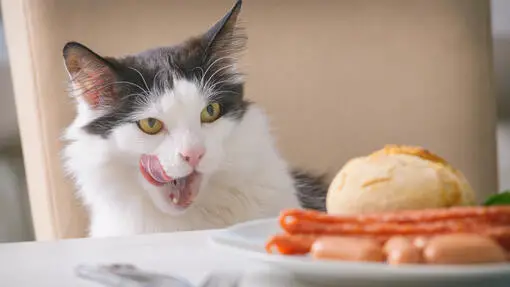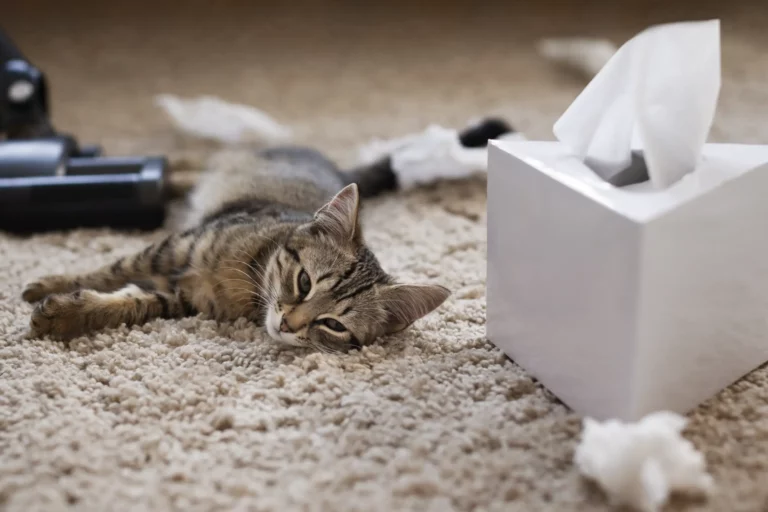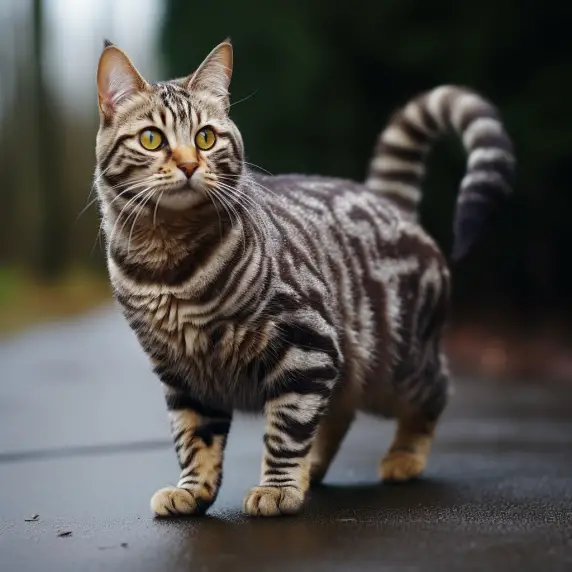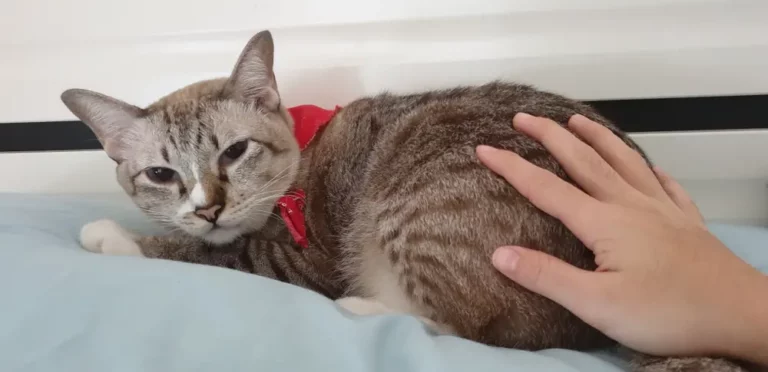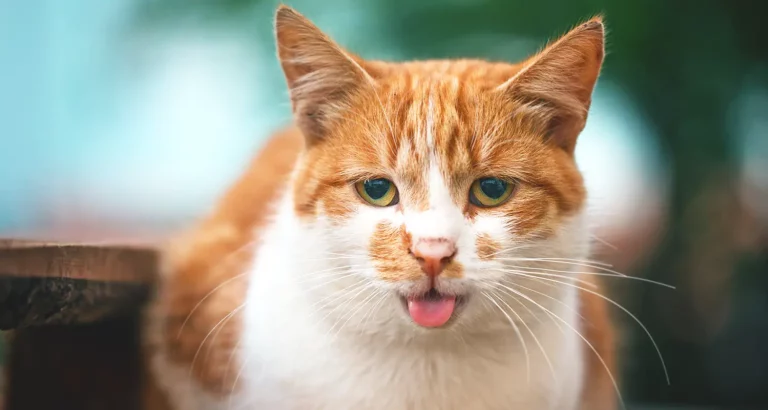Why Does My Cat Hump My Leg at Night?
Have you ever been awakened by your cat humping your leg in the middle of the night? If so, you might have felt surprised or even a bit embarrassed. Don’t worry, you’re not alone in this experience! This seemingly strange behavior is not uncommon among our feline friends.
In this blog post, we’ll delve into the reasons behind why cats hump their owner’s legs at night and offer practical advice on how to address it effectively. By understanding what drives this behavior, you can better support your cat’s well-being and create a more comfortable nighttime environment for both of you.
So, let’s get started on unraveling this feline mystery together!
Understanding Feline Humping Behavior
Humping as a form of play
Cats are naturally playful creatures, and humping can be a part of their normal play behavior. Just like chasing, pouncing, and wrestling, humping is an activity that can help them practice their physical skills, build muscle coordination, and relieve stress.
It is important to remember that although humping may appear unusual or disconcerting to humans, it can simply be a harmless form of feline amusement.
Dominance and territorial displays
In some cases, humping may be a way for cats to establish dominance or assert their territory. This type of behavior is often seen in multi-cat households or among cats with a history of anxiety or insecurity.
When your cat humps your leg, they may be trying to demonstrate their social status or secure their place within the household hierarchy. It’s important to address any underlying issues that could be causing anxiety or territorial disputes among your pets to help minimize this behavior.
Sexual behavior in cats
Even if your cat is spayed or neutered, humping can still be linked to sexual behavior. The surgery helps reduce the production of hormones like testosterone and estrogen, but it does not entirely eliminate them. As a result, your cat may still exhibit some mating-related behaviors, such as humping.
It is worth noting that neutered or spayed cats are less likely to engage in such behavior as frequently or intensely as their unaltered counterparts, but it can still occur in some cases.
Factors that May Influence Nighttime Humping
Increased activity during nighttime hours
Cats are crepuscular animals, meaning they are most active during dawn and dusk. However, their nocturnal instincts can also make them quite lively at night. This increased activity can lead to a variety of behaviors, including humping.
If your cat is humping your leg during the night, it could be a result of their natural instincts to be more playful and energetic during these hours.
Boredom and excess energy
Just like humans, cats can get bored if they don’t receive adequate mental and physical stimulation throughout the day. Boredom, combined with pent-up energy, may drive your cat to seek out unusual or undesirable ways to entertain themselves, including humping your leg at night.
Ensuring that your cat has access to a variety of toys, activities, and opportunities for exercise during their waking hours can help to alleviate boredom and minimize the chances of nighttime humping.
Lack of environmental enrichment
A lack of environmental enrichment can also contribute to your cat’s humping behavior at night. Cats need an environment that stimulates their senses and encourages natural behaviors, such as hunting, exploring, and climbing.
If their living space does not offer enough opportunities for these activities, they may resort to humping as a way to cope with the lack of stimulation.
Providing your cat with an enriched environment that includes hiding spots, climbing opportunities, and various textures can help keep them engaged and less likely to engage in undesirable behaviors at night.
Tips to Manage Your Cat’s Humping Behavior
Providing alternative play outlets
Offering your cat a range of toys, interactive games, and solo play options can help channel their energy into more appropriate activities. Cats have individual preferences when it comes to toys and play, so it’s a good idea to provide a variety of options to determine what your cat enjoys the most.
Regularly rotating toys and incorporating puzzle feeders or hunting simulations can keep your cat engaged and entertained, reducing the likelihood of nighttime humping.
Positive reinforcement training
Utilizing positive reinforcement techniques can help you redirect your cat’s humping behavior into more acceptable actions. Whenever your cat engages in an alternative behavior that you want to encourage, such as playing with toys or snuggling, reward them with treats, praise, or affection.
Consistently reinforcing desired behaviors can teach your cat that there are more enjoyable and rewarding activities than humping your leg at night.
Establishing a nighttime routine
Creating a consistent bedtime routine for your cat can help them understand when it’s time to wind down and settle in for the night. Engage in a play session or offer some interactive stimulation an hour or two before bedtime to help burn off excess energy.
Then, transition to calming activities, such as gentle petting or cuddling, and consider using a pheromone diffuser to create a soothing environment. Establishing this routine can signal to your cat that nighttime is for relaxation and sleep, not for humping your leg.
When to Consult a Professional
Persistent or escalating humping behavior
While it’s normal for some cats to exhibit humping behavior, there are instances when professional intervention may be necessary. If your cat’s humping behavior persists despite your attempts to manage it or begins to escalate in frequency or intensity, it could be an indication of an underlying issue that needs to be addressed.
In these cases, it’s crucial to consult with a veterinarian or an animal behaviorist to rule out any medical concerns or to receive guidance on how to effectively modify the behavior.
Signs of stress or aggression
If your cat’s humping behavior is accompanied by signs of stress, such as excessive vocalizations, hiding, or aggression, it’s important to seek professional help. These signs could indicate that your cat is experiencing anxiety or other emotional challenges that need to be addressed by a professional.
A veterinarian or animal behaviorist can assess your cat’s overall health and well-being, as well as provide recommendations for managing stress and improving their quality of life.
Frequently Asked Questions
Is it normal for female cats to hump as well?
Yes, humping behavior can be seen in both male and female cats. The reasons behind the behavior may vary, but it can be addressed using the same methods discussed in this blog post.
How long after neutering can I expect my cat’s humping behavior to decrease?
The length of time it takes for humping behavior to decrease after neutering can vary depending on the individual cat. Generally, it may take a few weeks to a couple of months for hormonal levels to drop and related behaviors to subside.
Is it okay to use a spray bottle to stop my cat from humping my leg?
While some pet owners may use a spray bottle as a deterrent, it’s important to focus on reinforcing positive behaviors rather than punishing the cat. Using positive reinforcement techniques can be more effective in the long run and help to avoid creating negative associations between the cat and its owner.
Final Thoughts
Understanding the reasons behind your cat’s nighttime humping behavior is the first step in addressing it effectively. By providing mental and physical stimulation, utilizing positive reinforcement techniques, and establishing a consistent nighttime routine, you can help guide your cat toward more appropriate behaviors.
Remember, patience and persistence are key when it comes to modifying any animal behavior, so don’t be discouraged if progress is slow. With time, understanding, and a little help from professionals if needed, you can create a harmonious and comfortable environment for both you and your furry companion.

